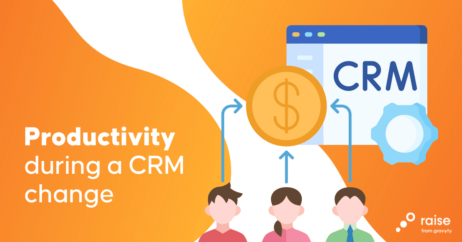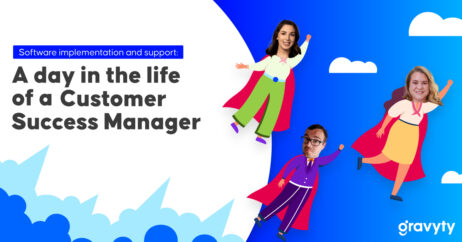How to choose the best alumni engagement software to support school + university communities

5 Tips, tricks + key takeaways
In her book, The Alumni Way, Dr. Maria Gallo coined the term “alumni capital” to describe “the powerful social capital that can be harnessed through alumni networks.” The balance of power between educational institutions and their former students is changing fast. It used to be that colleges and universities kept in touch with alumni over time in the hopes of being able to tap them in the future for both fundraising and relationship purposes (asking them to act as mentors or to volunteer time or expertise etc.).
Today, alumni relationships are a two-way street where former students demand as much from their school as the school demands from them. College graduates are reimagining what they want from their alma mater and expecting lifelong access to an active, accessible and vibrant alumni network where they can connect with peers, benefit from mentorship, build career contacts and even gain employment. All this in addition to a top rate education.
Why a digital alumni community platform?
Even if your alumni relations department already runs successful mentorship, networking and career-related programs —both in-person and online—it might not be enough. Since 2020, the world has made a leap towards digital to the extent that digital engagement is now the preferred method for many people.
Aside from being immediate and easy, people love engaging online because they can fit these interactions around their school or work schedules, make regional time differences irrelevant and have meaningful interactions with people without having to travel anywhere.
There is now a wealth of opportunity for universities and colleges to use digital solutions to better serve their alumni and scale the value they can provide to them. Alumni management software can help your school create vibrant alumni networks, deepen connections with alumni and leverage that alumni capital. But with so many alumni management software solutions on the market, how do you decide which one is right for your institution?
Read on and learn some of the most important things to look out for.
1. Ease of use
To be successful, you need a critical mass of students, alumni, community stakeholders, influencers and staff to create profiles on your alumni engagement platform and get comfortable using it. In the age of social media, people are tired of creating yet another account for another platform—especially if they aren’t sure they’ll actually use it.
For this reason, you want your platform to be as user-friendly as possible. From the very first interaction with the platform when creating an account, it should be absolutely obvious what to do. The interface should be enticing, uncluttered and welcoming—you want your platform to scream “I’m easy to use!”
While some of your users will be super comfortable just diving in and figuring things out as they go along, others will require quite a bit of hand-holding. Make sure your alumni networking software allows you to upload simple guidelines (including quick video guides) and take some time to plan out these materials before you launch.
2. Customizable branding + design
Most colleges and universities make their alumni community platform accessible from a link on their primary website, social media account, or via an emailed link. This link takes the user to your designated alumni engagement platform, which is often a separate website. This can be confusing to users who feel they have been steered away from the main site. Eliminate the confusion by making your alumni engagement site look very similar to your main site in terms of branding, colors, tone of voice, and content.
Consider the level of customization each solution allows:
- Can you upload your school’s logo, recreate your theme and use your colors?
- Can you change any text you like so that the language and style match your desired tone?
- Can you add new fields? For example, you might want to include something school-specific like “which dormitory, college, or campus do you belong to?”
The more customization that’s allowed, the better able you will be to build an alumni community branded app that looks and feels like a natural extension of your website.
3. How does it save your team time + resources?
If your office is going to onboard a new solution and take the trouble to train everyone in its use, you want it to be worth it. Delve deep into all the features offered by the alumni management software you are considering and ask yourself how these will help your staff do their jobs better. Don’t just look at the community-building features, but also consider workflow, the backend and the analytics.
Here are some ideas:
- Many alumni relations departments spend a lot of time matching students to alumni mentors. Will the solution allow self-matching and/or auto-matching?
- Alumni staff often complain about having to answer the same questions over and over again and spending too long on the phone. Will the solution let you use video, live streaming, group messaging and other technologies to create compelling and accessible materials to inform and educate your audience?
- Will it be easy to access metrics, such as how many people from a certain school year have logged on and created an account?
- Can you use the software to track KPIs in a way that is simple and clear?
- Can you automate tasks such as sending emails or posting on social media?
- Can you set up customized alerts to remind staff of tasks, e.g., send a reminder for new students to create their accounts or a series of alerts in the build-up to an online event?
- Does it integrate with your existing database or CRM (such as Salesforce or Raiser’s Edge) so that new user data flows automatically back into your central system, without you having to manually update the data?
4. Is the price right?
Everyone is price conscious these days and while investing in tools that will boost productivity and efficiency is always a good idea, you want to make sure you will get a good return on your investment (ROI). The cheapest solution is not necessarily the best. Decide upfront which features will be of the most benefit to your organization and then narrow down your list of potential vendors accordingly.
Of course, you can never know for sure how useful a solution will be to your department until you’ve actually used it. Find out if the provider will allow you to get a full product demo with enough time to ask all your questions. It would be useful to ask if there is a “sandbox” environment that you can try out first hand as a prospective client?
5. Offers support
After you’ve purchased a new software solution, there’s an onboarding period during which users are learning the different features. During this time, questions and problems inevitably arise and you don’t want to feel you’ve been left stranded by your provider. As important as it is to select a solution that checks all your boxes, you also need to make sure there is an approachable and responsive team behind it. Before you purchase anything, find out what support is available. Is there a helpline that you can access 24/7 or a live chat feature so you can ask questions and be answered immediately?
This can sometimes be hard to determine when you’re assessing vendors for the first time as everyone promises “excellent customer support!” on their websites and marketing materials; a good rule of thumb is to ask how many current clients they have, along with how many staff they have; if they have a very small client base (compared with other vendors), and a very small number of staff (50 or less), then you can typically expect slower response times, less strategic support, fewer staff dedicated to your account, and slow-moving product upgrades and feature releases.
After a period of use, you might want to add new features or further customize the platform to suit your requirements. Check whether the provider intends to hold your hand through all future tweaks and changes. Also, consider how many customers a potential provider has that are in a similar category to you. For example, a provider who deals with many colleges and universities might have some great ideas (gleaned from other clients) that will help you extend and refine the use of your own platform.
6. Meets data collection + reporting requirements
The reporting capabilities of the best alumni relations software platforms can be one of its greatest strengths. When you are able to easily track your progress, you can see where you have been successful, where you have struggled, and what areas you need to focus on. This way, you can use your time in a more efficient manner and get the most out of your program.
Having a good understanding of how your program is performing is necessary for any organization that wants to continually improve its processes. By knowing what worked well with your last campaign or event, as well as what didn’t work so well, it will help guide your decision making in future campaigns or events. An alumni community platform often acts as the catalyst for many institutions to become crystal clear on what their key performance indicators and metrics are, while simultaneously providing the data and analytics they need to assess whether or not their goals are being met.
Over to you
Choosing the best alumni relations software can help your institution stand out from the competition and attract more students. Not only will such a platform allow students to benefit from a strong and vibrant online community that offers mentorship, career advancement programs and community-building activities, it will also help your alumni department operate more efficiently, freeing up staff time to attend to students, donors and other key stakeholders and offer them better services all around.
Learn how Graduway from Gravyty alumni engagement software enables you to engage your alumni anytime, anywhere. Get a demo.




